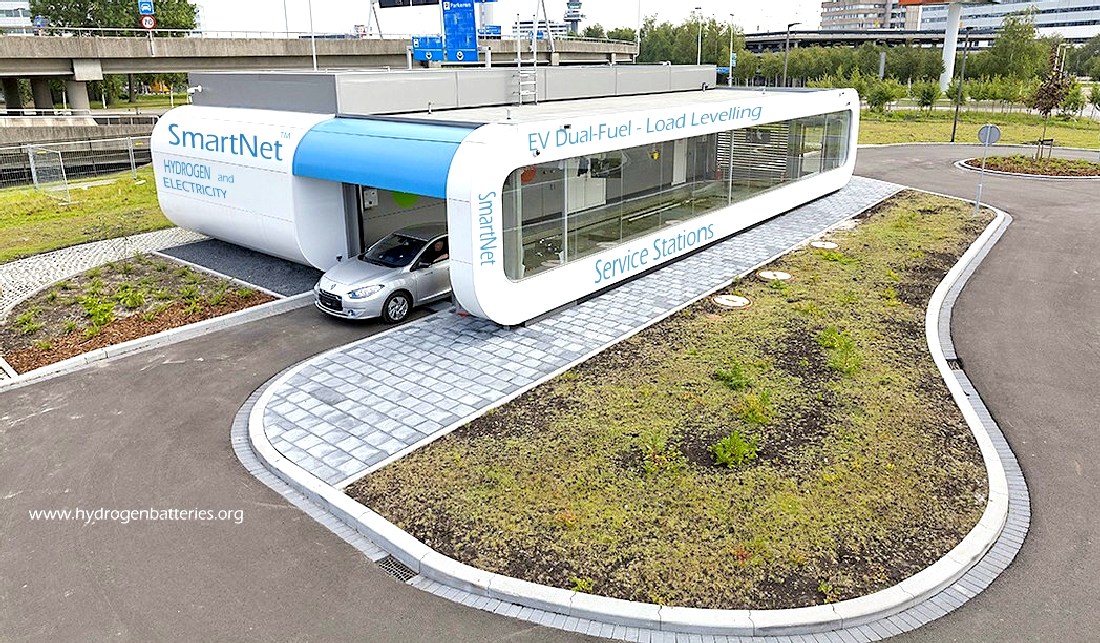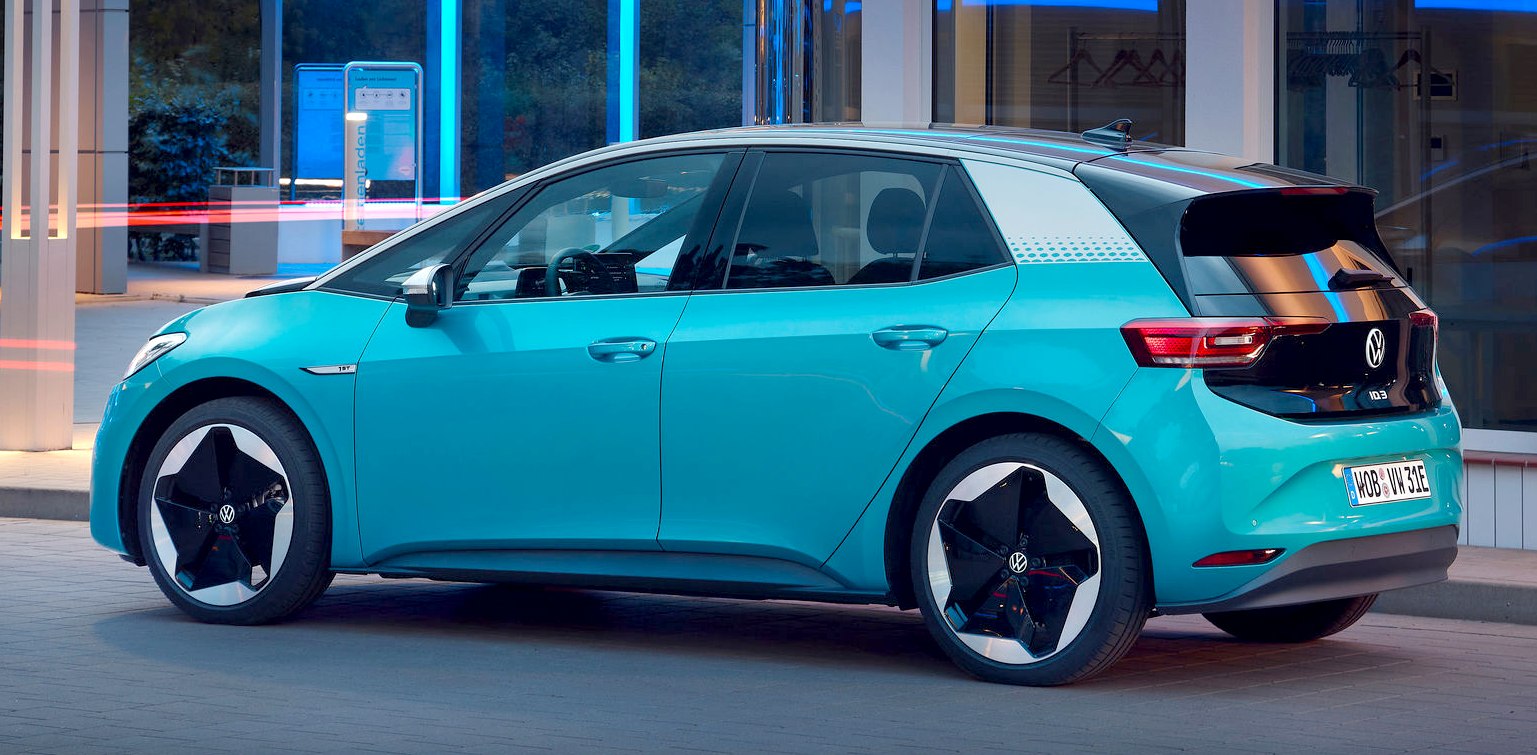|

Imagine
a means to store electricity as green hydrogen for the load levelling of
national grids, while also supplying energy for commercial vans and heavy
duty trucks. Fuel cells provide a way to convert hydrogen gas into
electricity, but on their own they do not represent a solution. The way
forward is with hydrogen batteries, as the beating heart of the Smartnet™
dual-fuel infrastructure.
We
are not sure that motorists will be pleased about Transmission System
Operators (TSOs) and Distribution System Operators (DSOs) [grid] operators
draining their car batteries to keep homes and industry supplied with electricity, but Governments
have taken the concept seriously enough to fund
studies. The
concept is reliant on EVs being plugged in at the times the Grid operators
wish to draw on private car batteries for load
levelling, thus utilizing an asset not belonging to them, potentially leaving car owners vulnerable and
range anxious. Also, robbing the cycle life of the batteries of privately
owned or leased packs, so depreciating them - without a mechanism for
compensating them equitably. The
concept becomes less appealing, when one considers that hydrogen fuel cell
vehicles (FCEVs) cannot be recharged by plugging into the grid. Hence, as
hydrogen cars become more popular, the pool of EVs for V2G diminishes. VEHICLE TO GRID PROPOSALS -
£30 MILLION V2G FEBRUARY 2018 UK PROJECT IN REVOLUTIONARY TECHNOLOGIES
Electric vehicles to help power people’s homes helped by almost £30 million funding. New technology which will unlock the potential for electric vehicles to help power people’s homes is being boosted by almost £30 million in government funding.
Through the Industrial Strategy the government is committed to becoming a world leader in shaping the future of mobility and in the design and development of the clean technologies of the future. This investment will help deliver on that ambition, supporting vehicle-to-grid (V2G) technologies that could enable electric cars and other vehicles to deliver electricity back to the smart grid, to light homes and power businesses.
The funding has been awarded to 21 V2G projects, to pay for research and design and development, with the aim of exploring and trialling both the technology itself and commercial opportunities.
These schemes, including EDF Energy’s V2GO scheme, will demonstrate how energy stored in electric vehicle
batteries could be borrowed by the electricity system during peak hours, before being recharged during the off-peak in time for their drivers to set off on their next journey.
V2G CASE STUDY
Using electric vehicles in dense urban areas like Oxford will significantly reduce local emissions and improve air quality, boosting the quality of life for residents and
benefiting businesses. Led by EDF Energy R&D UK, the ‘V2GO’ is a large scale demonstration of V2G charging in Oxford using 100 electric fleet vehicles (cars and vans) from a number of organisations including several delivery and taxi companies.
The project will develop, trial and evaluate potential business models for fleet operators’ use of electric vehicles and their suitability for vehicle to grid (V2G) charging.
The consortium is made up of 8 organisations with expertise in energy and power markets and systems, fleet operation value chains and electric mobility:
EDF Energy R&D UK, University of Oxford, Oxfordshire County Council, Arrival, EO Charging, Upside Energy, and Fleet Innovation.
At the same time these electric vehicles will provide a cleaner alternative to many of the fleet vehicles operated in UK cities, including Royal Mail
vans, and Addison Lee taxis.
Transport Minister, Jesse Norman said:
"As the number of electric vehicles grows and their battery capabilities increase, there is a huge opportunity for them to make a significant contribution to a smart grid. These projects are at the cutting edge of their field. Just like the visionary designs of Brunel and Stephenson in transport, they could revolutionise the ways in which we store and manage electricity, both now and in the future." Business Minister Richard Harrington said:
"The UK’s automotive industry is a great British success story, and as set out in our ambitious Industrial Strategy we are determined to lead the way in innovative, low-emission vehicle production. We have shown that growing the economy while cutting emissions, can, and should, go hand in hand. Vehicle-to-grid technology provides another opportunity for the UK to showcase to the world our leading expertise in game-changing automotive and low carbon technologies."
Dan Bentham, Head of R&D, Smart Customers, EDF Energy said:
"Electric vehicles will play an important role in the future of UK energy and its economy. They will have a beneficial impact on the environment by reducing emissions and improving air quality. Through our research, EDF Energy will use new technologies, business models and smart systems to make low carbon transport, and the infrastructure and market conditions needed for its success, a reality."
The investment will help deliver on the government’s ambition, set out in the recently published Automotive Sector Deal , to be at the forefront of low-emission and electric vehicle production, powering the next generation of innovative, environmentally-friendly vehicles.
The competition for government funding, run by Innovate UK, saw a host of winners including SSE Services,
Nissan, OVO Energy, Octopus Energy, Cisco, Flexisolar and AT Kearney.
Innovate UK recently concluded the assessment process, with OLEV and BEIS providing almost £30 million to grant fund industry led collaborative R&D in
electric ‘vehicle to grid’ technology for up to 70% of project costs. For media queries, call: +44 (0) 20 7944 4292

Owners
of EVs would need to agree to have their batteries used for V2G, unless
statute was introduced to force them to sign on the dotted line. History
shows us that owners of cars, especially cherished vehicles, are loath to
sacrifice wear and tear on their collections.
LINKS
& REFERENCE https://www.
Please
use our A-Z
INDEX to navigate this site
This
website is provided on a free basis as a public information service.
copyright © Climate Change Trust 2021. Solar
Studios, BN271RF, United Kingdom.
|

